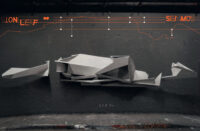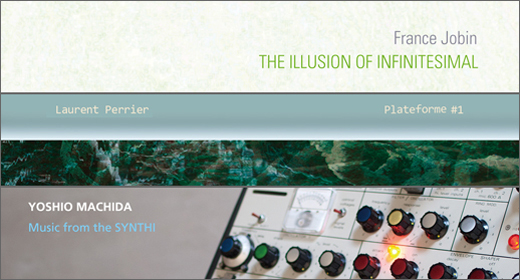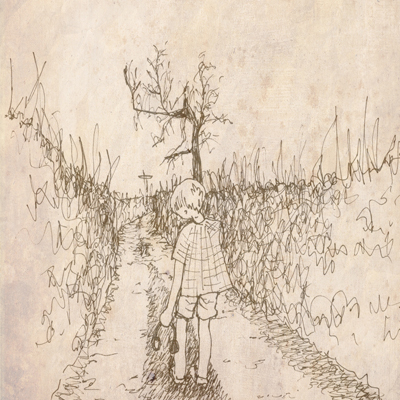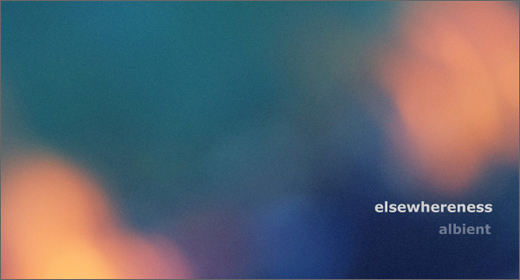“…Purveyors of experimental and ambient confections, Baskaru, put out just a few select releases each year, seeking high artistic and visual standards – an aim backed up by the French imprint’s roster, which spans the likes of Maurizio Bianchi, Francisco López, and Lawrence English. A 3-in-1 review of what’s new from Baskaru, in the shape of three lesser known but no less noteworthy names: Lugano Fell, @c, and Ethan Rose & Laura Gibson, is incoming from Contributing Editor Alan Lockett…”
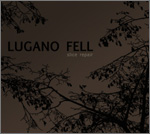 (Lugano Fell :: Slice Repair) The name James Taylor may be familiar (no, not THAT James Taylor) as one half of tech-house tweakers, Swayzak. Side project, Lugano Fell, though, is another music from a different kitchen. Slice Repair is a beat-depleted suite of dark delicacy and sporadic bruit-ality that fuses electronic with acoustic to birth a brood of ambient attitude. Ice-breaks, bird-calls, ceramics, and glass are Taylor-made in a sound foundry of smudged melodies and laptop-squidged instruments, speaking in tongues of once-gazed-at shoes and the aesthetics of failure. With a saturated sound-palette of various tonalities, this collage boy ranges far and wide, drone-basing, cut’n’pasting, bringing a noise that neither annoys nor demands abatement, but rather tickles, teases, entices in an array of ways: sizzling schiz-scapes (“Vallory,” “47 Easy 47”), dripping dream-deletes (“Bleaker,” “Slope”), freaked folk-warps (“Preform Naple,” “Two Hundred Clocks And A Metre”). For reference points, think perhaps of another Taylor, viz. Deupree, and his 12k-ways, a space adjacent to Room40, or some similar Spekk-tackle. Tracks take unexpected turns, sudden irruptions into deceptive lulls, wet infusions pouring over freeze-dried contours – see, for example, “Caniculaire” with its slivers of electronic chimes shifting to thicker textures, then ceding to caustic noise. Then there is the extended “Two Hundred Clocks And A Metre,” whose arrangement seems to dissect the plucks and strums of an acoustic guitar sequence, re-making and re-modelling the resultant micro-particles into broken bitstreams, further reassembled into a semblance of flow, before being slowly engulfed – a process to which the title perhaps alludes. Slice Repair in fact points to Taylor, with his penchant for appealing error-smithery, is placing his Lugano Fell in a ’90s Oval-shaped location; no shame in that, as Popp has left that building – still furnished, so to speak. Anyway, Taylor’s digi-surgery here provides compelling testimony against any residual notions that experimental means unbeautiful.
(Lugano Fell :: Slice Repair) The name James Taylor may be familiar (no, not THAT James Taylor) as one half of tech-house tweakers, Swayzak. Side project, Lugano Fell, though, is another music from a different kitchen. Slice Repair is a beat-depleted suite of dark delicacy and sporadic bruit-ality that fuses electronic with acoustic to birth a brood of ambient attitude. Ice-breaks, bird-calls, ceramics, and glass are Taylor-made in a sound foundry of smudged melodies and laptop-squidged instruments, speaking in tongues of once-gazed-at shoes and the aesthetics of failure. With a saturated sound-palette of various tonalities, this collage boy ranges far and wide, drone-basing, cut’n’pasting, bringing a noise that neither annoys nor demands abatement, but rather tickles, teases, entices in an array of ways: sizzling schiz-scapes (“Vallory,” “47 Easy 47”), dripping dream-deletes (“Bleaker,” “Slope”), freaked folk-warps (“Preform Naple,” “Two Hundred Clocks And A Metre”). For reference points, think perhaps of another Taylor, viz. Deupree, and his 12k-ways, a space adjacent to Room40, or some similar Spekk-tackle. Tracks take unexpected turns, sudden irruptions into deceptive lulls, wet infusions pouring over freeze-dried contours – see, for example, “Caniculaire” with its slivers of electronic chimes shifting to thicker textures, then ceding to caustic noise. Then there is the extended “Two Hundred Clocks And A Metre,” whose arrangement seems to dissect the plucks and strums of an acoustic guitar sequence, re-making and re-modelling the resultant micro-particles into broken bitstreams, further reassembled into a semblance of flow, before being slowly engulfed – a process to which the title perhaps alludes. Slice Repair in fact points to Taylor, with his penchant for appealing error-smithery, is placing his Lugano Fell in a ’90s Oval-shaped location; no shame in that, as Popp has left that building – still furnished, so to speak. Anyway, Taylor’s digi-surgery here provides compelling testimony against any residual notions that experimental means unbeautiful.
::..:::…..:..::….:::::..:::..:::::::……:::…::.:::….::::..:..:::…::…….:::::
 (@C :: Music For Empty Spaces) Pedro Tudela and Miguel Carvalhais have been @c since 2000, as well, incidentally, as promoting bespoke experimental electronica as curators of the Portuguese Crónica enterprise. Music for Empty Spaces may seem to allude to Eno, but the ambience of @c is of a different order – more aligned with the post-industrial inquiries and field-abstractions of a López or a Bianchi, and earlier concrète-ists. The Where-it’s-at of @c is “[?] the cross-section of three complimentary approaches to sound art and electronic music: algorithmic composition, concrete sounds and improvisation. If on one hand their compositions are usually built around strong structural foundations, it’s also common that multiple bits are freed from these structures when integrated into the sound work, contributing to the settling of elaborate strategies of deconstruction.” Here the duo exercise their deconstructive chops on tour-captured recordings , the What-it’s-about being “[?] concrete and musical sounds and their plastic nature when they are digitally (captured and) transformed. How the sounds involve us with an immaterial and invisible space. […] the number of ways in which a sound can be heard and how it conflicts or dialogues with other sounds.” Those empty spaces, then, are not outside, but deep inside, specifically the interstices between the sonic particles unearthed by macroscopic processing. The tweaking twosome exult in transmuting the teeniest of tones into towering edifices, just as they relish reducing towering structures to digi-dust, exploding timbral differences, coupling incongruities into protean tonemasses. Take the incursion halfway through “76.2” of a played-with piano, obfuscated and disfigured, piercing through a nebulae of static and environmental distortion. Or the vibrant forms of “76.3,” sounding and resounding, writhing, re-writhing, as the pair alter its structural states.” From the sonic stew, slivers of speech swim up, fragments of melody float by, before being sucked down, the whole progressively haunted by instrumental revenants in different forms. The art of @c can thus be viewed as a kind of sonic surrealism: previously unsensed juxtapositions start making sense as part of a kind of willed ear-mediated hallucination. @C play off Brobdingnag against Lilliput, as radio crackle is rendered tumescent to a tempest, surface noise macro-sharpened to poly-pinprick penetration, field captures overexposed into universes. In these empty spaces, Macro- is the new Micro-.
(@C :: Music For Empty Spaces) Pedro Tudela and Miguel Carvalhais have been @c since 2000, as well, incidentally, as promoting bespoke experimental electronica as curators of the Portuguese Crónica enterprise. Music for Empty Spaces may seem to allude to Eno, but the ambience of @c is of a different order – more aligned with the post-industrial inquiries and field-abstractions of a López or a Bianchi, and earlier concrète-ists. The Where-it’s-at of @c is “[?] the cross-section of three complimentary approaches to sound art and electronic music: algorithmic composition, concrete sounds and improvisation. If on one hand their compositions are usually built around strong structural foundations, it’s also common that multiple bits are freed from these structures when integrated into the sound work, contributing to the settling of elaborate strategies of deconstruction.” Here the duo exercise their deconstructive chops on tour-captured recordings , the What-it’s-about being “[?] concrete and musical sounds and their plastic nature when they are digitally (captured and) transformed. How the sounds involve us with an immaterial and invisible space. […] the number of ways in which a sound can be heard and how it conflicts or dialogues with other sounds.” Those empty spaces, then, are not outside, but deep inside, specifically the interstices between the sonic particles unearthed by macroscopic processing. The tweaking twosome exult in transmuting the teeniest of tones into towering edifices, just as they relish reducing towering structures to digi-dust, exploding timbral differences, coupling incongruities into protean tonemasses. Take the incursion halfway through “76.2” of a played-with piano, obfuscated and disfigured, piercing through a nebulae of static and environmental distortion. Or the vibrant forms of “76.3,” sounding and resounding, writhing, re-writhing, as the pair alter its structural states.” From the sonic stew, slivers of speech swim up, fragments of melody float by, before being sucked down, the whole progressively haunted by instrumental revenants in different forms. The art of @c can thus be viewed as a kind of sonic surrealism: previously unsensed juxtapositions start making sense as part of a kind of willed ear-mediated hallucination. @C play off Brobdingnag against Lilliput, as radio crackle is rendered tumescent to a tempest, surface noise macro-sharpened to poly-pinprick penetration, field captures overexposed into universes. In these empty spaces, Macro- is the new Micro-.
::..:::…..:..::….:::::..:::..:::::::……:::…::.:::….::::..:..:::…::…….:::::
 (Ethan Rose & Laura Gibson :: Bridge Carols) What happens when two worlds collude? It’s folktronica, Jim, but not as we know it. Laura Gibson, guitar-strumming folkie with just a couple of low-profile releases; Ethan Rose, adept of old technologies and their deployment, sound installations, film scores and a previous electronic record on the same Baskaru. Recordings of Gibson’s voice, lyrical and wordless, were made in various locations – basement, forest, field. Rose added instruments, predominantly piano, strings and bells, demonstrating considerable transformative prowess with his electro-acoustic enhancements. The voice receives similar treatment (in both senses), while reserving the right to remain an old-fashioned medium for delivery of verbal imagism. The ensuing ambience is an affair of delicate electronics draped over plucked or struck acoustics, field recordings woven into drones, discrete glitchery toying with the tones of a thumb piano or a music box, vocals dissected and rearranged into novel narratives. Rose’s re-contextualizing of Gibson’s voice is skilled and the placing of a form of neo-Americana in this electro-acoustic template is fresh-sounding. It’s partly attributable to the placing of unwonted instrument voicings against the familiar, and partly to the temper of Gibson’s inflections that meander between tenderised and torched up. “Introduction” heralds the oneiric pastoralism to follow with a breathy chorus creeps in over slow-churning organ and inarticulate vocals, setting the tone for the likes of “Younger,” wherein voice duets with trumpet over tintinnabulating layers, segueing to a pastoral acoustic guitar coda; mention might also be made of “Boreas Borealis,” which flirts with pop’s ethereal introspective twin; in fact, throughout genre forms are placed in other settings and made anew – folk fragments, jilted jazz, hitched to synthetic clouds and the aleatory pitchshifts and reversals of post-digital bent. There are traces of reference points – chanteuses like Mirah and Jolie Holland, on one folk-pop hand, maybe Múm and Sigur Rós on the electronic-ambient other – but Bridge Carols is sui generis, possessed of a particular grain that imparts a tender strength, further compounded by Gibson’s cloven songforms and elliptical expressivity. Overall, Bridge Carols has about it a wistful lyricism and nostalgia that judiciously avoids the trap of twee-dom, cleverly blurring demarcations between folk, pop, and experimentalism.
(Ethan Rose & Laura Gibson :: Bridge Carols) What happens when two worlds collude? It’s folktronica, Jim, but not as we know it. Laura Gibson, guitar-strumming folkie with just a couple of low-profile releases; Ethan Rose, adept of old technologies and their deployment, sound installations, film scores and a previous electronic record on the same Baskaru. Recordings of Gibson’s voice, lyrical and wordless, were made in various locations – basement, forest, field. Rose added instruments, predominantly piano, strings and bells, demonstrating considerable transformative prowess with his electro-acoustic enhancements. The voice receives similar treatment (in both senses), while reserving the right to remain an old-fashioned medium for delivery of verbal imagism. The ensuing ambience is an affair of delicate electronics draped over plucked or struck acoustics, field recordings woven into drones, discrete glitchery toying with the tones of a thumb piano or a music box, vocals dissected and rearranged into novel narratives. Rose’s re-contextualizing of Gibson’s voice is skilled and the placing of a form of neo-Americana in this electro-acoustic template is fresh-sounding. It’s partly attributable to the placing of unwonted instrument voicings against the familiar, and partly to the temper of Gibson’s inflections that meander between tenderised and torched up. “Introduction” heralds the oneiric pastoralism to follow with a breathy chorus creeps in over slow-churning organ and inarticulate vocals, setting the tone for the likes of “Younger,” wherein voice duets with trumpet over tintinnabulating layers, segueing to a pastoral acoustic guitar coda; mention might also be made of “Boreas Borealis,” which flirts with pop’s ethereal introspective twin; in fact, throughout genre forms are placed in other settings and made anew – folk fragments, jilted jazz, hitched to synthetic clouds and the aleatory pitchshifts and reversals of post-digital bent. There are traces of reference points – chanteuses like Mirah and Jolie Holland, on one folk-pop hand, maybe Múm and Sigur Rós on the electronic-ambient other – but Bridge Carols is sui generis, possessed of a particular grain that imparts a tender strength, further compounded by Gibson’s cloven songforms and elliptical expressivity. Overall, Bridge Carols has about it a wistful lyricism and nostalgia that judiciously avoids the trap of twee-dom, cleverly blurring demarcations between folk, pop, and experimentalism.
::..:::…..:..::….:::::..:::..:::::::……:::…::.:::….::::..:..:::…::…….:::::
All releases above are out now on Baskaru.








